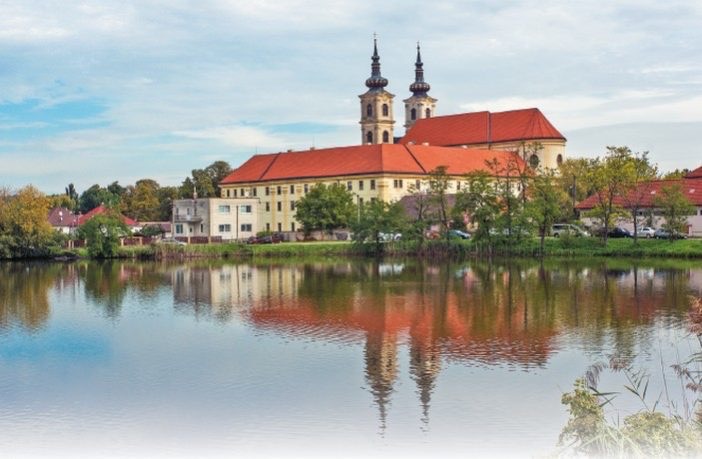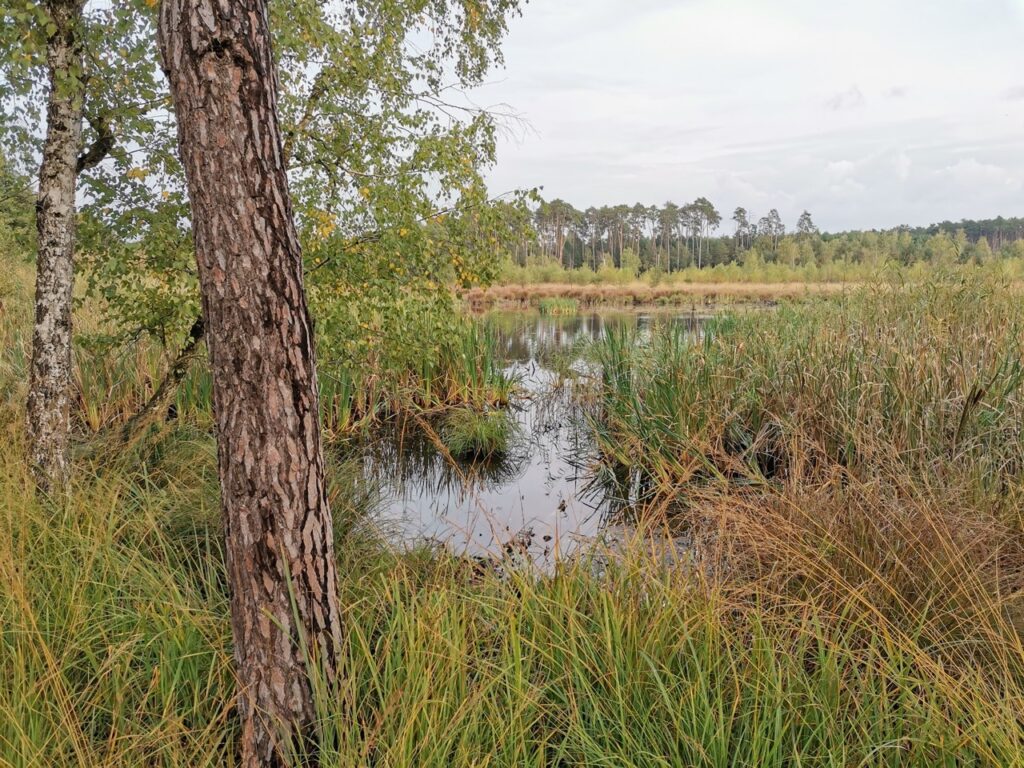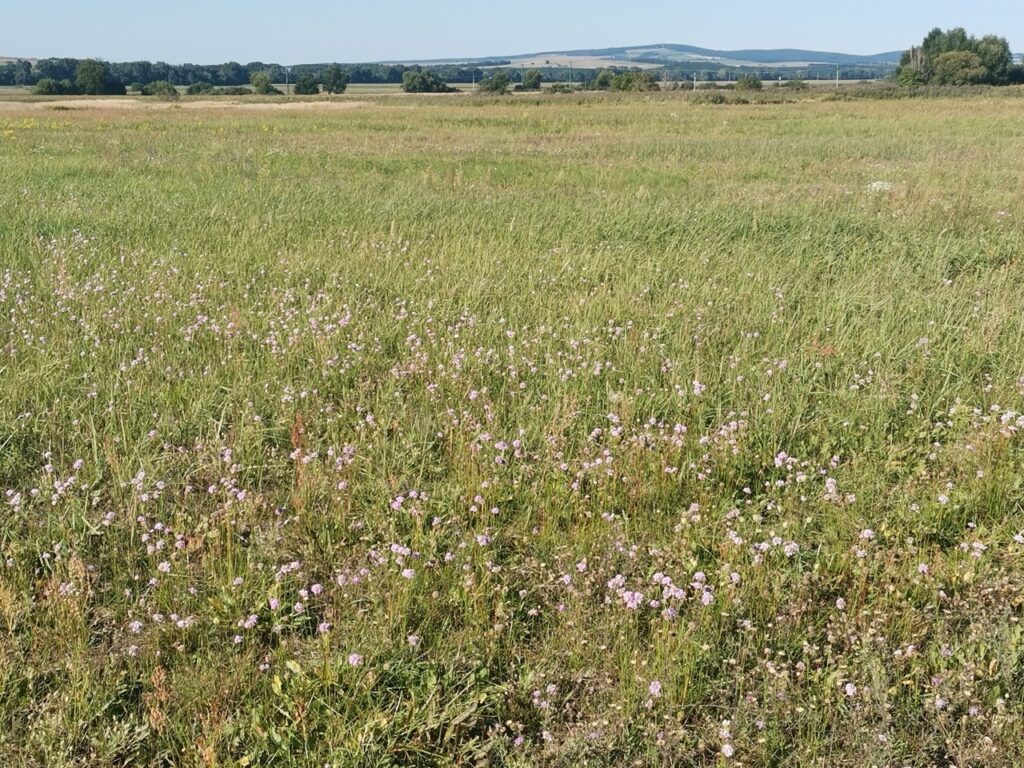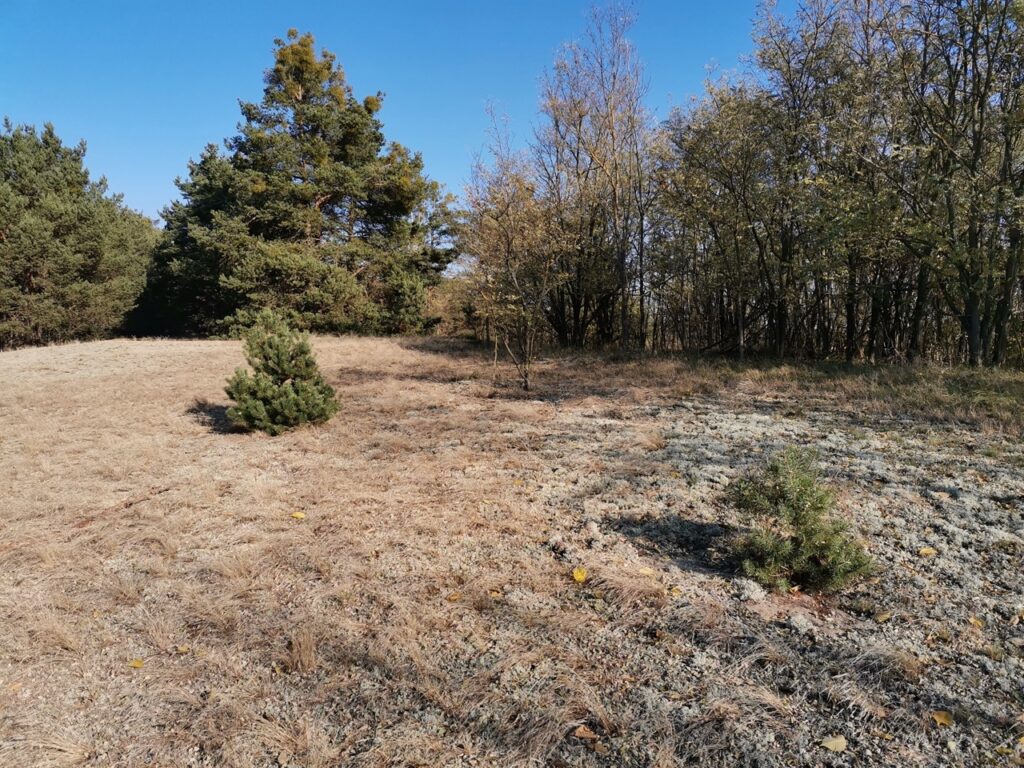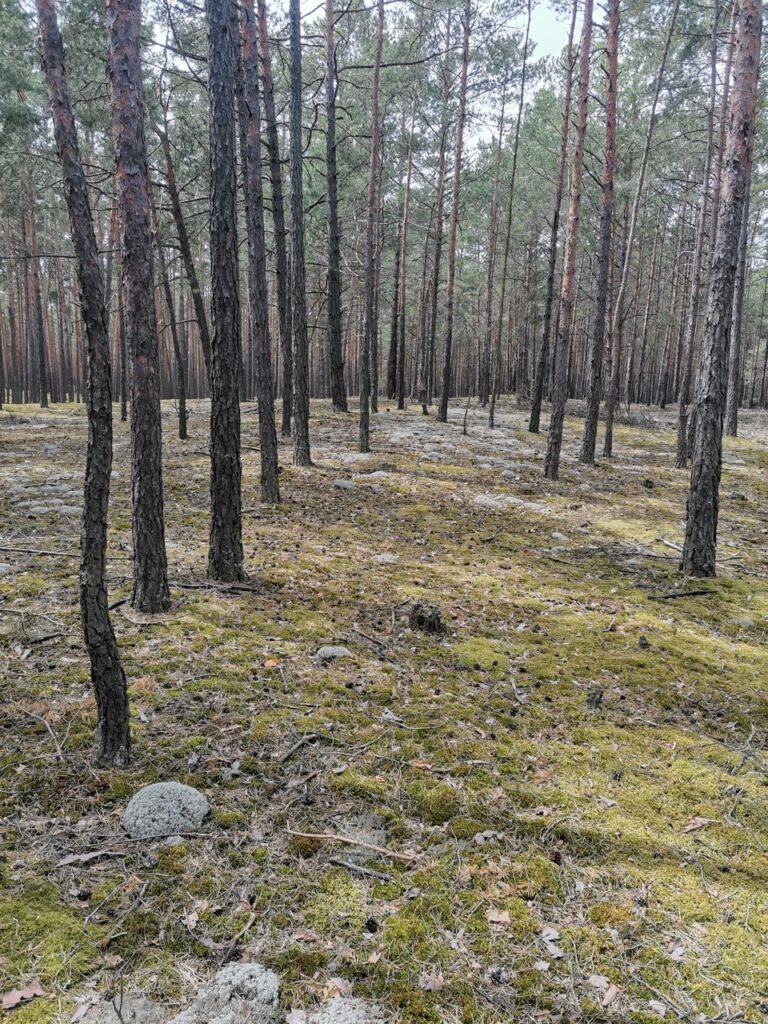(led by Milan Valachovič and Pavol Mereďa)
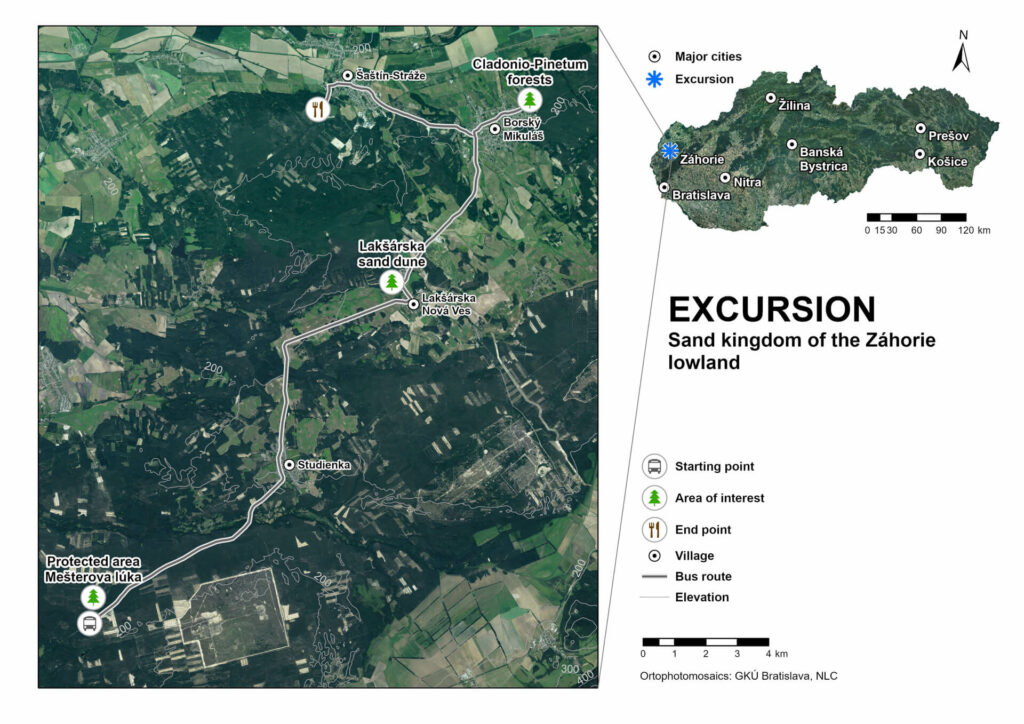
Guides: Milan Valachovič, Pavol Mereďa
Plant Science and Biodiversity Centre, Institute of Botany, Slovak Academy of Sciences, Bratislava, Slovakia, milan.valachovic@savba.sk, pavol.mereda@savba.sk
Locations
Mešterova lúka Protected Landscape Area (1.33 km2): 48°28’45″N, 17°03’35″E, ca. 185 m a.s.l
Lakšárska duna dune (5.27 ha): N 48°34’56″N, 17°10’33″E, ca. 220 m a.s.l
Borský Mikuláš/Borský Peter: N 48°38’32” N, 17°13’47” E, ca. 199 m a.s.l
Šaštín: 48°38’17.6″N, 17°08’34.61″E, ca. 183 m a.s.l
Climate
The region is a plain behind mountains, so the climate is much drier than that of the rest of Slovakia. Average year temperature is 9-10 degrees, the hottest month is July with 19.4 degrees; the coldest one is January with 1.8 degrees. Rainfalls are at average rate of 560 mm. Záhorie is the area with hot and mild wet climate with mild winters.
Geology and geography
The peculiar part of Slovakia – Záhorie represent the lowland of triangular shape situated in the northwestern margin of the Pannonian Basin. Záhorie is a region of natural beauties, possessions of earth, thermal healing waters, plains, foothills and hills covered by woods. Is bounded by the west by Morava river and the eastern border is formed by Malé Karpaty Mts (Little Carpathian Mountains). Specific geology – aeolian sand dunes and oligotrophic sandy soils are manifested in different vegetation cover comparing other parts of Slovakia.
Nature conservation
Mešterova lúka Protected Landscape Area is located in the cadastral territory of the Malacky town and in the military district of Záhorie, in the district of Malacky (Bratislava region). The area was declared in 2011. The subject of protection are habitats of European importance: old acidophilous oak woods with Quercus robur on sandy plains, natural dystrophic lakes and ponds, transition mires and quaking bogs and bog woodlands. This area is under the 2nd, 4th and 5th level of nature protection.
Habitats (according to Natura 2000 habitat classification)
2330 Open grassland with Corynephorus and Agrostis of continental dunes
2340* Pannonic inland dunes
3160 Natural dystrophic lakes and ponds
7140 Transition mires and quaking bogs
91D0* Bog woodland
9190 Old acidophilous oak woods with Quercus robur on sandy plains
91T0 Central European lichen Scots pine forests
Vegetation synopsis
Class Koelerio-Corynephoretea Klika in Klika et Novák 1941
Order Corynephoretalia canescentis Klika 1934
Alliance Corynephorion canescentis Klika 1931
Ass. Thymo angustifolii-Corynephoretum canescentis Krippel 1954
Ass. Festuco dominii-Corynephoretum Borhidi (1958) 1996
Alliance Armerion elongatae Passarge 1964
Ass. Erysimo diffusi-Agrostietum capillaris Vicherek in Chytrý et al. 1997
Class Lemnetea de Bolós et Masclans 1955
Order Lemno-Utricularietalia Passarge 1978
Alliance Utricularion vulgaris Passarge 1964
Ass. Lemno-Utricularietum Soó 1947
Class Quercetea robori-petraeae Br.-Bl. et R. Tx. ex Oberd. 1957
Order Quercetalia roboris R. Tx. 1931
Alliance Quercion roboris Malcuit 1929
Ass. Festuco ovinae-Quercetum roboris Šmarda 1961
Ass. Molinio arundinaceae-Quercetum roboris Neuhäusl et Neuhäuslová-Novotná 1967 nom. cons.
Class Dicrano-Pinetea Hartmann et Jahn 1967
Order Pinetalia sylvestris Oberd. 1957
Alliance Dicrano-Pinion (Libbert 1933) W. Matuszkiewicz 1962
Ass. Cladonio-Pinetum sylvestris Juraszek 1928
Ass. Hylocomium splendens-Pinus sylvestris community
Forests and grasslands communities
The first stop Mešterova lúka PLA is an example of extrazonal vegetation inside the pine forests.
The terrain depressions between sandy dunes occupy the acidophilous oak woods with Quercus robur on sandy plains with dominance of Molinia arundinacea in the understory. Typical are the alder swamp woodlands often admixed by Betula pendula and oak trees considered probably as fragments of bog woodlands. Water table represent natural dystrophic ponds with Utricularia communities and small patches of transitional mires with Sphagnum species. Common taxa are Caltha palustris, in water relatively rare are Comarum palustre, Hottonia vulgaris, Hydrocharis morsus-ranae, Hydrocotyle vulgaris. On edges of water grows Iris pseudacorus and othe helophytes such as Lycopus europaeus, Lysimachia vulgaris, Lythrum salicaria, Scutellaria galericulata. Typical are tall sedges (Carex elata, Carex elongate, Carex pseudocyperus, Carex riparia, Carex vesicaria) as well as rushes (Juncus bulbosus, Juncus conglomeratus, Juncus effuses).
Second stop is in intravilan of village Lakšárska Nová Ves. On the outskirt of the village can be observed an example of sand dune, partly open and partly covered by pine woodland with typical sand dunes species Corynephorus cannescens, Cynodon dactylon, Dianthus serotinus subsp. borussicus, Koeleria glauca, Jasione montana, Spergula morisonii, S. pentandra or Scorzonera purpurea. Typical taxon on locality is Viola saxatilis subsp.curtisii.
Third stop brings a view of the interior of the dry lichen pine forest of the Cladonio-Pinetum association. Acidophytes, such as Calluna vulgaris, Carex ericetorum, Veronica officinalis, very rare are some Pyrolaceae, e.g. Chimaphila umbellata, also the Daphne cneorum. Conspicuous picture gives a synusia of lichens, Cetraria islandica, and various Cladonia species, and some bryophytes (Leucobryum glaucum).
Possible stop could be also by railway station of Borský Mikuláš village, where could be demonstrate open to dense siliceous grasslands with Corynephorus and Agrostis on sandy soils assigned as the Armerion elongataealliance. These were found in Slovakia firstly only last year, in past were overlooked. The success to see some taxa depends on amount of precipitation during spring season. The habitat represent taxa such as Acosta rhenana, Armeria vulgaris subsp. elongata, Chondrilla juncea, Erysimum diffusum, Festuca trachyphylla, Helichrysum arenarium, Jasione montana, Rumex thyrsiflorus and others.
Final stop is planned as lunch in small town Šaštín – in recreation area Gazárka. Originally two separate villages, now it is one of the youngest towns in Slovakia, having received town privileges on 1 September 2001. The first written mention about Šaštín was in 1218. The Šaštín is one of the most important Marian shrines in Slovakia. Several pilgrimages are held there annually, especially on 15 September. Last year the basilica was visited also by Pope Francis.
Management and threats
The main vegetation represent plantations of the Scots pine (Pinus sylvestris L.), which forests cover extensive majority of the area. Most of them are considered to be the results of relatively recent plantation-oriented forest management. We investigated the long-term history of lowland pine forests in the Záhorie Lowland region of aeolian sands. Pine monocultures were planted there already in the mid-seventeenth century and currently prevail in the land cover of the region.But pine trees were a natural part of forests of the Early Holocene. Palaeoecological data suggested a distinct compositional linkage of recent pine-dominated forests with their Early Holocene predecessors. Moreover, no significant change was detected in tree dominants in at least the past two millennia. Contrary to palaeoecology, archeaeobotany suggested that broadleaved trees (mostly oak) dominated during the past 4000 years. However, this result is probably strongly biased by human preferences for wood for specific purposes. On the other hand, pine in palaeoecological data is doubtless overrepresented because of its abundant pollen production. We conclude that pine forests with a significant admixture of oak continuously covered the sandy substrates of the Záhorie Lowland throughout the Holocene. The present pine forests can therefore be considered fairly close to the original vegetation of the study region.

